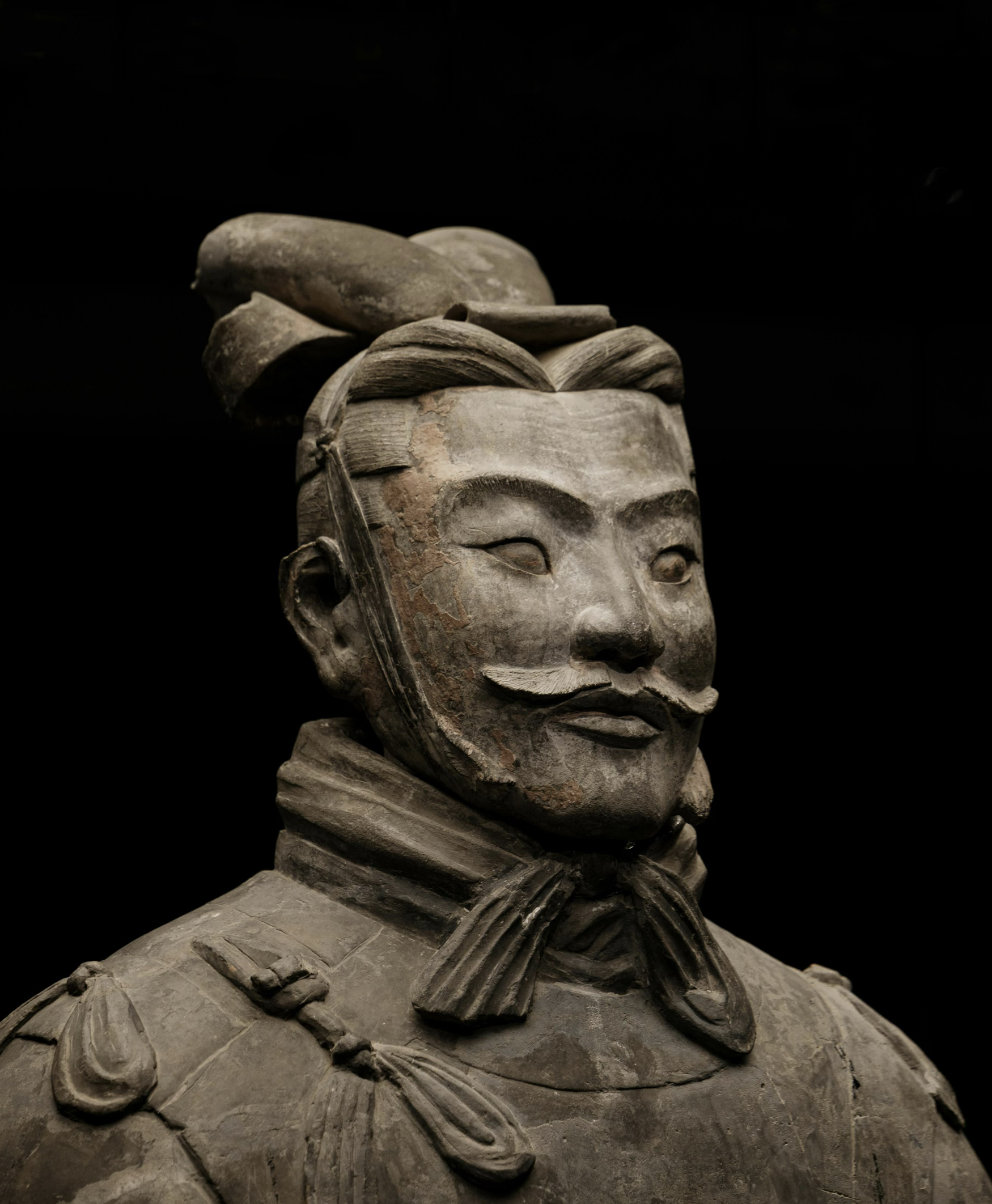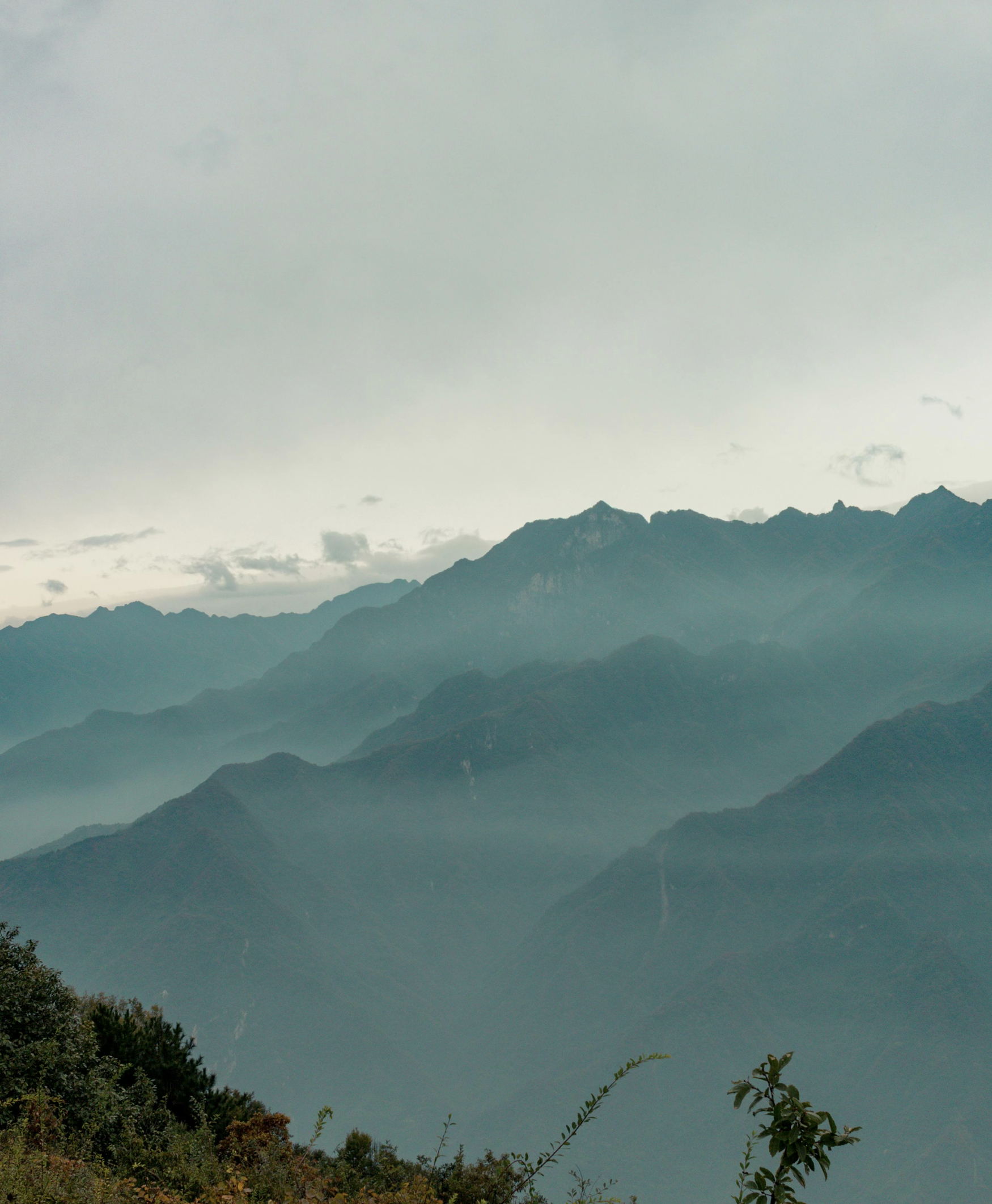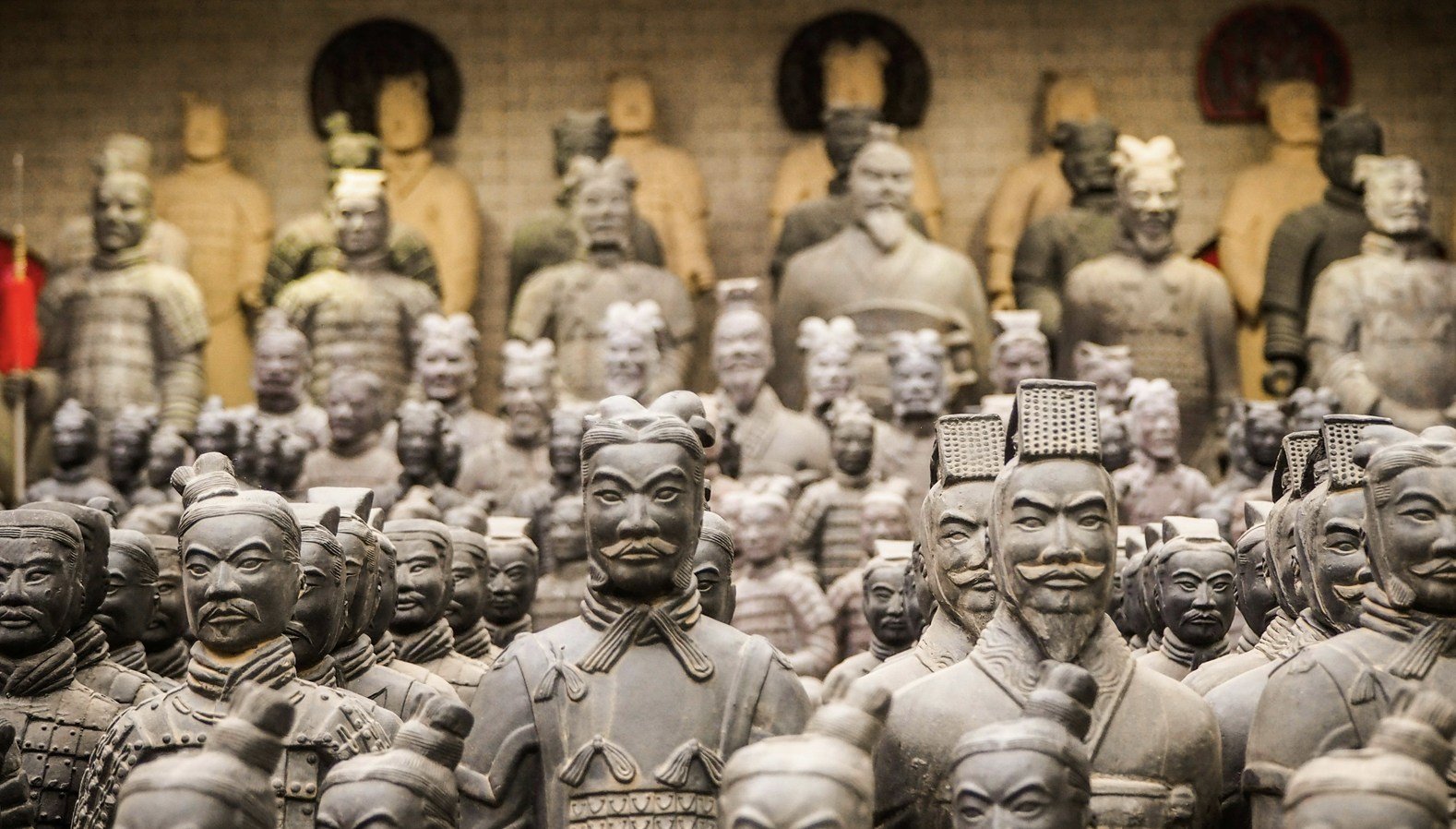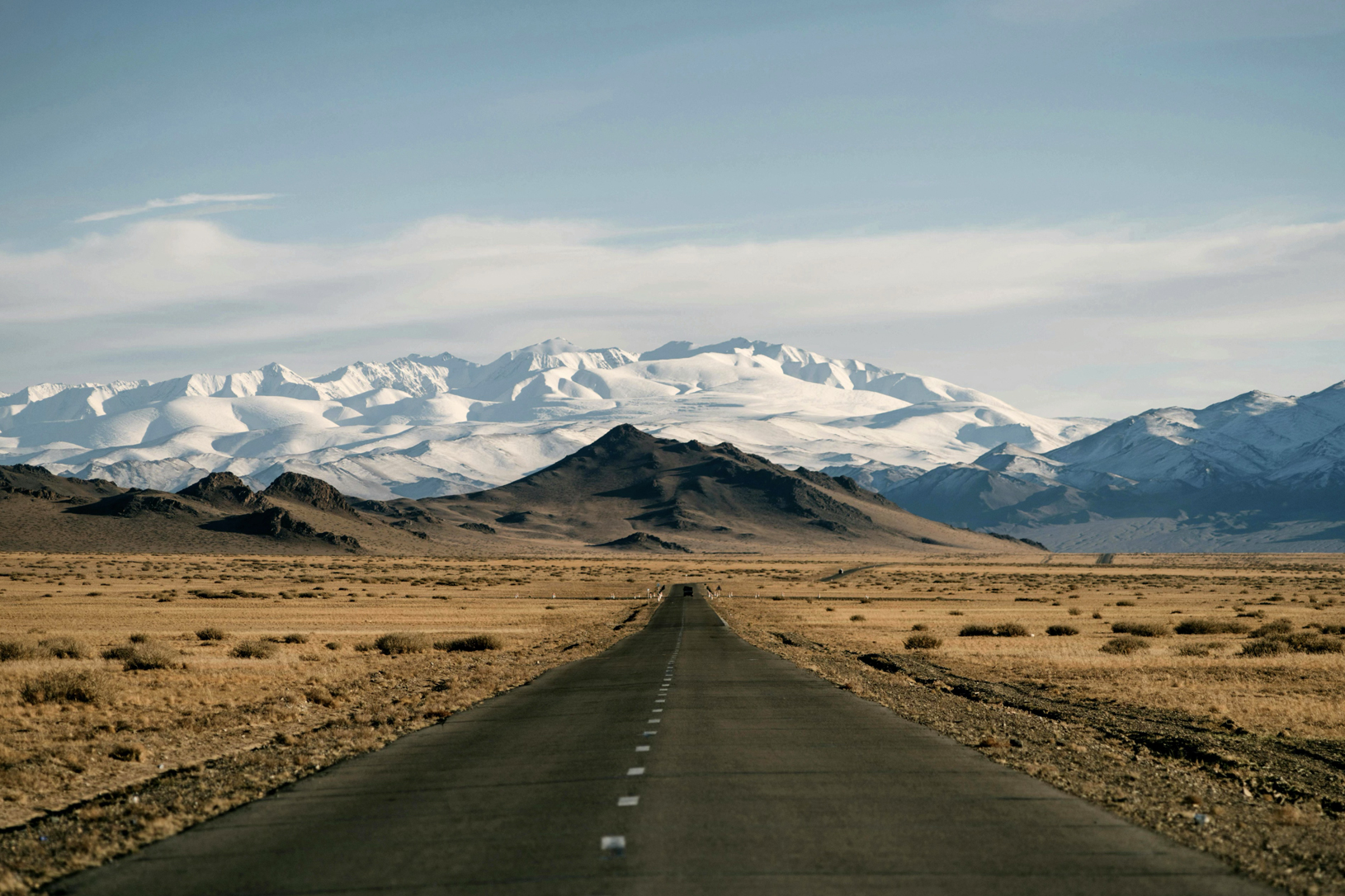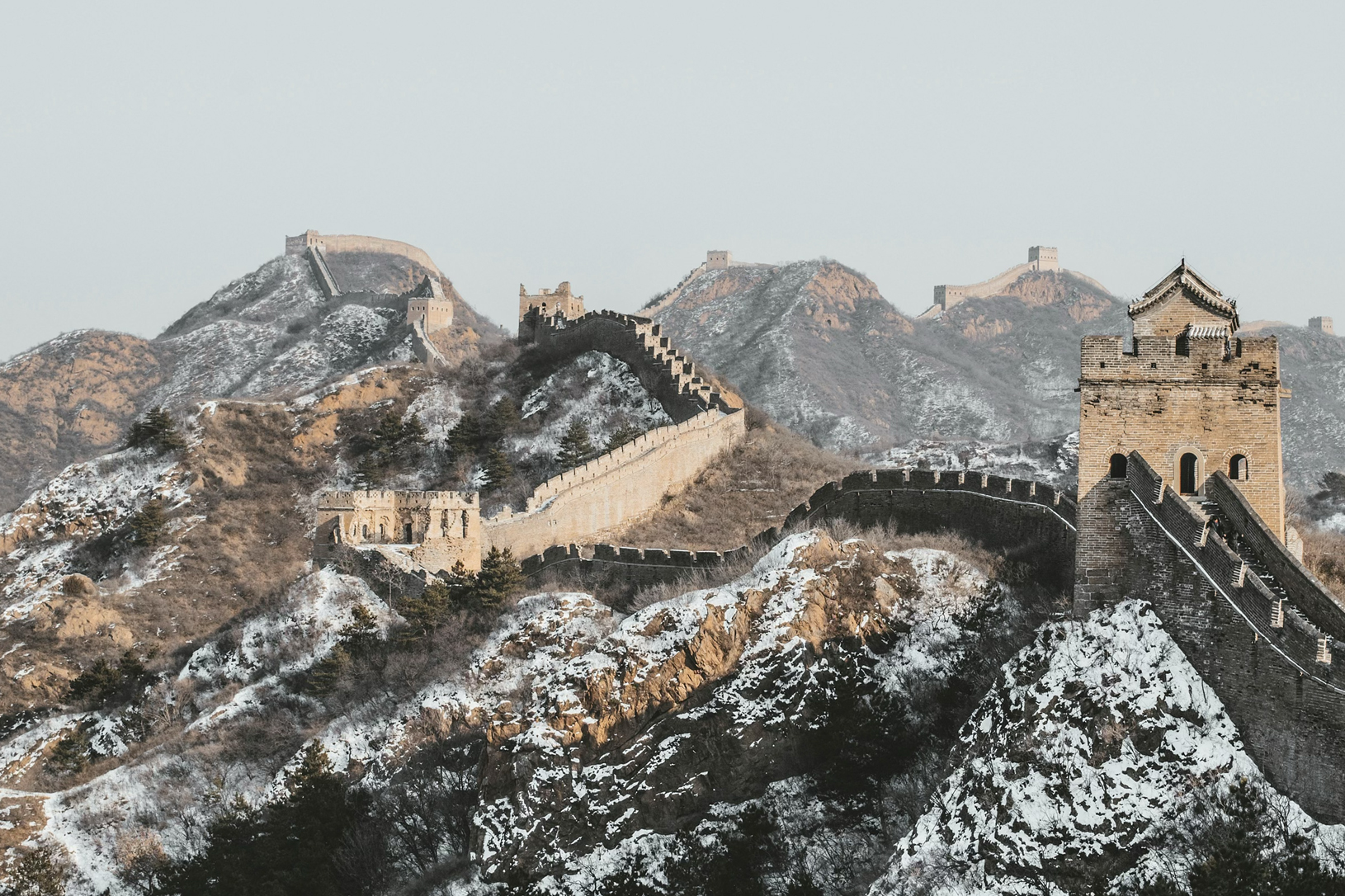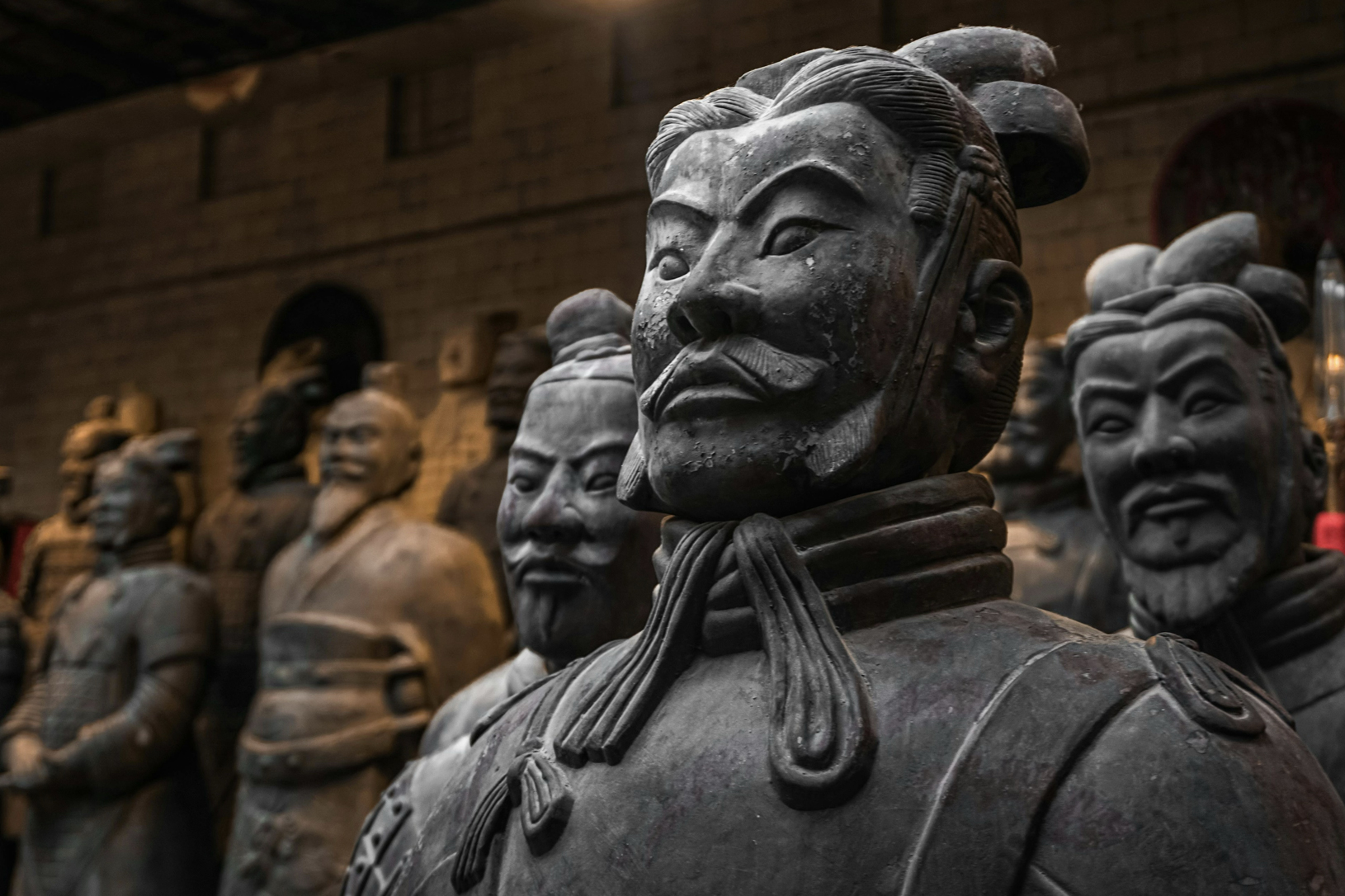The day begins with a gentle drive beyond Xi’an’s urban edges, where apartment blocks give way to wheat fields, orchards and small villages shaped by the rhythm of farming seasons. Along the roadside, bundles of corn hang beneath tiled eaves and locals move between morning tasks, offering a quiet glimpse into everyday life on the northern plains. This gradual shift from city to countryside prepares us for one of China’s most extraordinary archaeological landscapes, a place where the past rests just beneath the soil.
Before reaching the main excavation site, we pause at a small community workshop connected to the farmers who first uncovered fragments of the Terracotta Army in 1974. The space is humble — wooden tables, clay dust, simple tools — yet it introduces the essence of the story: craftsmanship. Here, an artisan demonstrates the regional clay’s texture and the shaping techniques still practised today, offering an intimate link to the artistry behind the warriors. It is a grounding moment, one that frames the monumental discovery not as an abstract wonder, but as something created by human hands.
At the archaeological complex, the scale reveals itself steadily. We enter Pit 1, where thousands of life-sized soldiers stand in formation, each figure distinct in posture, hairstyle and expression. Our travel expert shares insights into Emperor Qin Shi Huang’s world — a ruler who unified China, standardised scripts and sought to secure his authority in both life and death. The warriors were not decorative sculptures but guardians engineered to accompany him into the afterlife, reflecting a belief system where power extended beyond mortality.
As we move between the pits, quieter corners allow us to observe partially restored figures, fragmented torsos and unearthed details still emerging from the soil. These spaces highlight the ongoing nature of the discovery, reminding us that much of the emperor’s vast subterranean kingdom remains untouched. From a raised platform overlooking the unexcavated mound, we see the landscape as archaeologists first did — undisturbed earth concealing an empire’s final chapter.
Lunch nearby introduces regional flavours. Handmade biangbiang noodles, bean curd with local vinegar, crisp guokui bread and lightly seasoned vegetables connect us back to the land that once supported Qin’s armies. The simplicity of the dishes offers a welcome contrast to the monumental ambition of the site.
In the afternoon, we join a hands-on session with a local craftsperson. Working with the same clay used across the region, we learn the gestures and moulding techniques that shaped the original warriors — the pressure of the thumb, the smoothing of armour plates, the formation of facial features. Each participant creates a small figure to take home, a tactile reminder that the Terracotta Army is not only an archaeological marvel but a masterpiece of human skill.
The return to Xi’an is peaceful. As late-afternoon light settles across the countryside, we reflect on a day that brought us close to an emperor’s ambition, the artisans who realised it and the enduring legacy they left beneath the earth.
